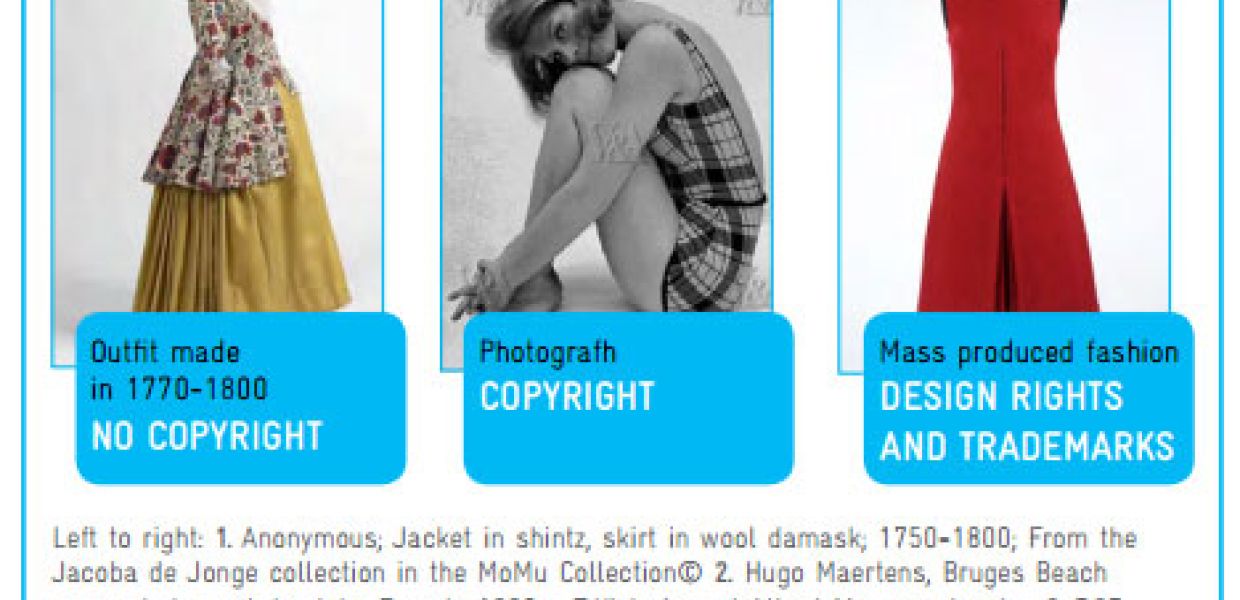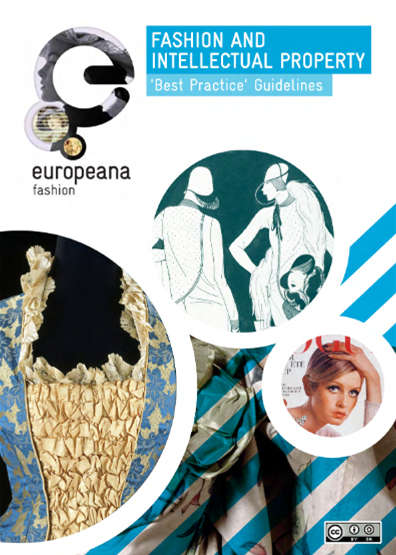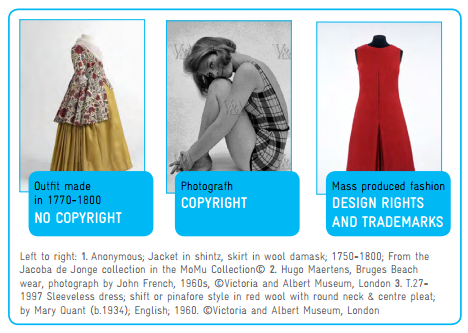The right stuff: Europeana Fashion publishes ‘best practice’ intellectual property guidelines

Guest blog by Roxanne Peters, Intellectual Property Manager at the Victoria and Albert Museum, and Europeana Fashion partner.
What do Chanel’s interlocking Cs, Laboutin’s red sole and David Bowie’s stage costumes have in common? The answer is they are all protected by intellectual property (IP).
Like physical property, IP can be sold, bought, inherited or otherwise transferred. It is a valuable asset and whether you are a creator, consumer or custodian of someone else’s work, it is important to understand your rights and respect the rights of others.
However, for a cultural heritage organisation which may be creators, owners, users, managers and providers of content, IP can become a potential minefield as well as its greatest asset.

Read the Europeana Fashion IP Guidelines
Changes in IP legislation, expectations to make more content available for free online, anonymous works as well as institutional financial and operational challenges can make the demands of dealing with IP seem overwhelming.
As the Victoria and Albert Museum’s (V&A) Intellectual Property Manager, I am often faced with unravelling the IP conundrums surrounding the museum’s wonderful collection of fashion, including issues around ownership, permissions and what is protected by IP, where there is, largely speaking, little guidance out there for those managing fashion collections.
Why is there no clear guidance currently available? This may be due in part to the subjective nature of fashion. As a cultural heritage organisation, fashion garments may be acquired as expressions of art as well as for any social and cultural considerations. Legally, fashion has been seen in the UK as serving purely functional purposes, whilst the law varies in other parts of Europe.

An example from the IPR Guidelines
You need to ask questions such as has this dress been mass-produced? Did the creator intend this hat to be a work of art? What was the agreement made between the three designers who collaborated on this range of textiles? Do we need to seek permission from both creators of this work? The list goes on.
In the absence of authoritative legislation, I firmly believe that – whilst it is important to understand the legal principles – success hinges on being able to apply law in practice. For example, what is the real risk in publishing an image of a mass-produced fashion garment on the museum’s award-winning 'Search the Collections' site? Was the anonymous work created with any commercial intent?
For day-to-day management of our collections, we have seen a shift from curating and providing access to fashion solely in a physical space, to exploring new and innovative ways to reach audiences virtually. The recent groundbreaking shows 'Hollywood Costume' and 'David Bowie Is' have reinforced the importance and value in seeking permission for using fashion content both on site and online. Working collaboratively with creators and designers achieves the best outcome for public access and enjoyment and builds good relationships with rights holders.
The V&A is delighted to be one of 22 partners of the Europeana Fashion project, a 3-year project which aims to provide online access to over 700,000 items of outstanding fashion content from Europe’s leading museums and private fashion archives. We have written ‘best practice’ IPR guidelines to support partners when selecting content to make available online. These have been developed with project partners and are based on our experiences in managing fashion content (including 2D and multimedia works). They combine key IP principles with ‘best practice’ flowcharts and useful documents to use when seeking permission.
The guidelines have been designed principally to address the challenges facing cultural institutions when managing rights in fashion content. However, they also provide a good pragmatic approach to managing rights more generally and we are pleased to share them with all Europeana partners.
While these guidelines do not constitute legal advice and simplify a complex subject, we hope they go some way to reassuring you that by combining a little bit of law, logic and experience, you are on your way to getting it right!
Fashion is as important as any other creative process; whether you protect your work to establish a distinctive brand identity like Chanel or commission emerging designers to create an iconic wardrobe like Bowie's, cultural institutions have a responsibility to pursue best practice, give credit where credit is due and educate others in a virtual world. Getting it right at the start of any Europeana project will ensure that the long-term ambitions to create a more open and accessible source of European's cultural heritage are realised.
